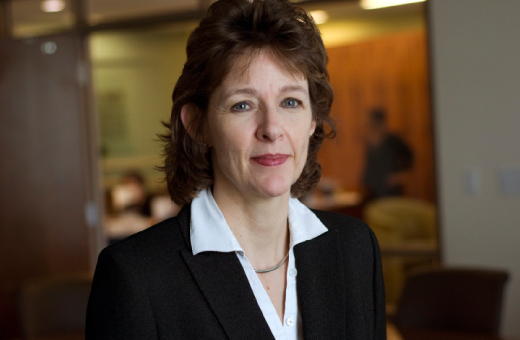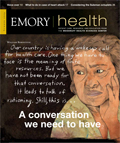Then there were eight

Kathy Kinlaw, associate director of the Emory Center for Ethics, is a senior associate in pediatrics at Emory School of Medicine.
By Kathy Kinlaw
An Emory ethicist examines decisions surrounding the Suleman octuplets.
Not since Terri Schiavo has the public’s attention and passion been so galvanized around an issue of clinical ethics—and its social implications. When the news broke in January 2009 that Nadya Suleman had given birth to octuplets, initial amazement that all 8 infants were to survive (a first in the United States) turned to speculation and controversy around the medical and social circumstances surrounding their birth. As a health care ethicist who began my clinical training working with health care professionals, patients, and families making decisions about pregnancy, birth, and the care of children, I followed the Suleman octuplets with particular interest.
As the story has continued to evolve, it has been marked by great speculation and difficulty in identifying the facts. Most of the information has come through the media, including some “direct reports” such as interviews with Nadya and press conferences with physicians caring for the infants. The speculative nature of the information has actually inflamed and thus changed the story, including the public dialogue and sentiment. We learned that Suleman had six other children, including a set of twins, all who were conceived through previous in vitro fertilization (IVF) treatments. Questions swirled around how many embryos were transferred in past and current IVF cycles, whether the sperm donor was aware of these multiple births, and how a non-working, single mother was able to afford numerous IVF treatments and support the children.
The narrative of Nadya Suleman and her children raises fundamental questions about the rights and responsibilities of parents, obligations to protect the welfare of children, and the professional role of physicians involved in reproductive medicine.
Suleman states that growing up as a single child, she has always had a strong desire to have many children. Do women (or couples) have the right to make their own decisions about having a large family? Though there is debate about whether there is a clear constitutional right to have and rear children, our society generally supports the ability of a woman to make decisions about her own reproductive health and guards against assumptions about what characteristics are necessary to be a “good mother.” Should there be limits to such reproductive freedom?
The welfare of the child, or of a potential child, must be carefully considered, along with the freedom of choice of the woman. In addition to assessing the health of the woman and the likelihood of success, IVF programs routinely have a counselor assess an individual or couple for evidence of concern about parenting, such as a history of violence or of psychiatric illness that would present a risk to the child. The American Society for Reproductive Medicine (ASRM) indicates that fertility programs may withhold services based on “well-substantiated judgments that those patients will be unable to provide or have others provide adequate child-rearing.” ASRM also indicates that programs may provide services “except in clear cases of significant harm to offspring.” The lack of agreed-upon criteria for when a practice or the state may withhold fertility services needs to be addressed with written policies and procedures, both to support consistent, just decision making and to protect the health and welfare of both the woman and potential children. The potential future harm is not, of course, just from the transfer procedure itself but also from the potential of implanting multiple embryos. Multiple gestation presents a health challenge to the pregnant woman and is significantly correlated with premature birth and associated health problemsfor infants.
In Nadya Suleman’s story, the decision by the fertility specialist to transfer six embryos in one cycle also raises significant ethical questions. In fact, it is reported that she may have had multiple embryos transferred in each of her other five pregnancies, and that the six transferred most recently were fertilized embryos left over from a previous IVF cycle. Given the tremendous improvements in the success of IVF and especially the success of prior procedures with Suleman, the transfer of six embryos is hard to justify medically and ethically. The 2006 ASRM embryo transfer guidelines clearly recommend that no more than two embryos be transferred in IVF for a patient with Suleman’s reproductive history. Transferring six embryos placed both Suleman and the resulting implanted embryos at great risk. The fertility specialist has been reported to the California Medical Board for further investigation.
Even a strongly held belief in the sanctity of life does not support the decision to transfer six frozen embryos at one time. If one’s goal is to maximize the chance that these embryos will implant and lead to live births, then single births best support this goal. Multiple gestation pregnancy actually increases the risk that some or all of the fetuses will not survive—thus the rarity of living octuplets and other high-order multiple births, and the mother is at greater risk, too.
Now that the octuplets have beaten the odds, the long-term welfare of these children remains a concern. How will the interests of each of the 14 children in this family be protected and promoted? It is unclear whether Suleman has adequate financial and people resources available to provide care. Public outcry has raised concern about publicly funded support for these children—with estimated costs to raise eight children for 18 years at a minimum of $1.5 million, not including any special medical treatments. Psychological support also may be a concern. Product advertising and entertainment as a potential source of financial support has not been forthcoming yet, with even the potential for this funding plan leaving many feeling deeply unsettled about the long-term welfare of the children.
If this story is disquieting for many, we could ask state governments to set limits on the conditions under which women or couples can have multiple children—whether by assisted reproduction or naturally. Would we prefer such governmental intervention on private choices? Balancing the interests of individual adults, children, and society is not straightforward.
Despite the wonder of the birth of octuplets, most would agree that we should be working to avoid high-order multiple births. The risk to the potential mother and children is simply too great. Women (couples) should be fully informed, and professional standards that limit the number of embryos transferred—and perhaps the number of eggs fertilized in the first place—should be taken seriously.
The very public nature of the Suleman story will once again play a role in this social debate as we follow the course of these children in coming weeks and months.


